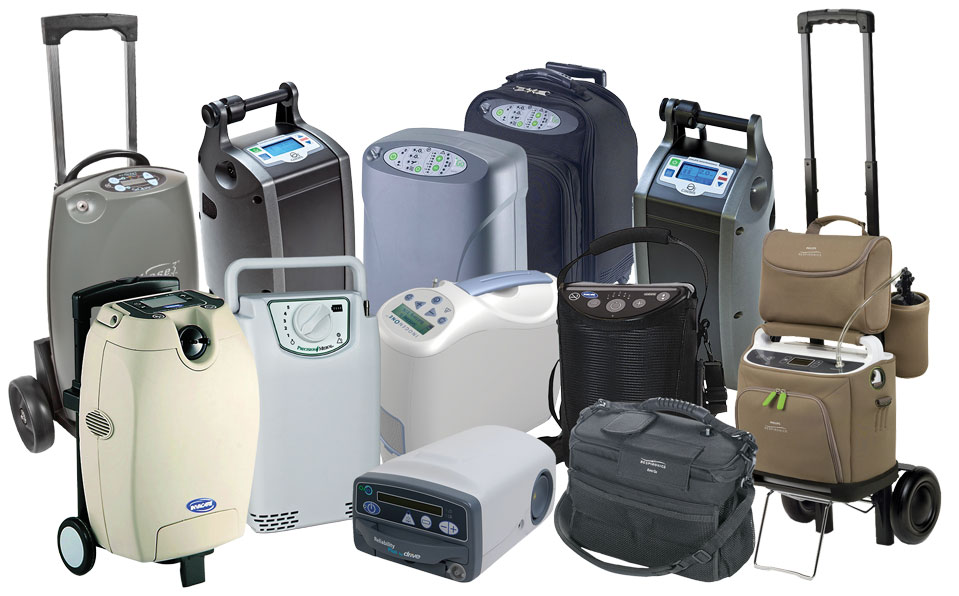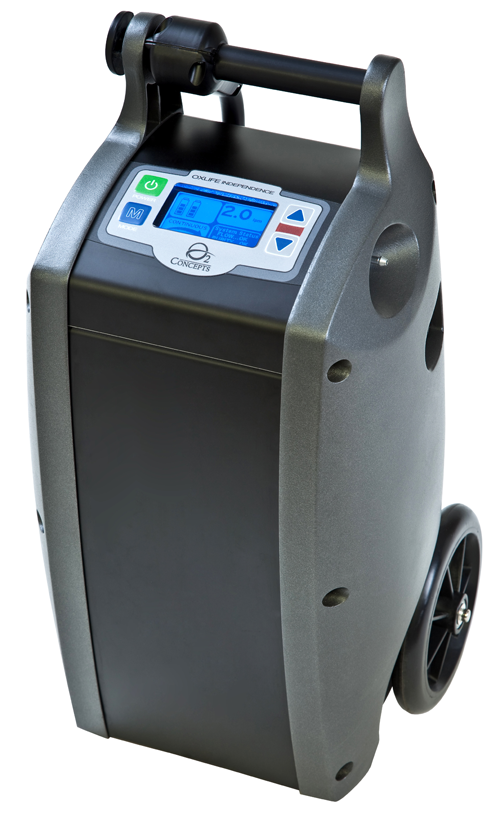The Greatest Guide To Portable Oxygen Concentrators
Wiki Article
Portable Oxygen Concentrators for Dummies
Table of ContentsThe Greatest Guide To Portable Oxygen ConcentratorsThings about Portable Oxygen ConcentratorsPortable Oxygen Concentrators Fundamentals ExplainedOur Portable Oxygen Concentrators PDFs
Stationary oxygen concentrators were once the standard, but these storage tanks can consider 50 extra pounds and were really troublesome (Portable Oxygen Concentrators). Now, portable oxygen concentrators obtain the work done, and they can fit right into a handbag or purse! The only thing you must remember is that mobile concentrators have much more restricted oxygen delivery capacitiesThere are 2 major kinds of portable oxygen concentrators: pulse dose and continual flow. As the name suggests, pulse dose concentrators provide oxygen periodically, just turning on when you inhale. This kind of gadget is normally suggested for COPD individuals with restricted oxygen demands, as the quantity of O2 that a pulse dose concentrator can provide is reasonably low.
This device can deliver up to 3,000 m, L of oxygen every min, while pulse dose devices tend to cover out at 1250 m, L. Continual flow devices are the go-to for a lot of COPD individuals, as they're suitable for people that need 2 to five litres of oxygen a minute.
Currently that you have this guide to the various types of mobile oxygen devices, pick the most effective tool with the help of your medical professional. You can explore our blog sites to discover even more concerning the sorts of portable oxygen readily available and our other items, like tubes and cannulas. Or you can call us straight with any type of certain inquiries you could have.
See This Report about Portable Oxygen Concentrators
We know Americans make use of residential versions in home care circumstances. We wondered exactly how well these mobile oxygen concentrators would certainly function in medical facilities. POC concentrators raise the percentage of oxygen in ambient air people breathe in, whenever they require a boost. Private-use ones are small enough to carry about, and may aid avoid the need to go to busy facilities and hospitals.When it involves mobile oxygen therapy, there are 2 main options for delivery. These are mobile oxygen cylinders which consist of compressed oxygen gas, or oxygen concentrators, which use a battery powered system to compress and filter air, in order to develop a regular supply of concentrated oxygen. In this article, AMS Composite Cylinders Technical Director, Tony Morrin, contrasts the 2, taking a look at the advantages and disadvantages of each oxygen delivery system for NHS clinical oxygen individuals in terms of individual freedom.

Mobile Oxygen Concentrator Oxygen pureness is regularly higher when supplied from cylinders it never drops below 99. 6%, no matter the circulation rate needed. In battery-powered concentrators, pureness is affected by circulation rate, and might be 90% or much less, relying on the devices. Whilst oxygen concentrators look at this site can be beneficial for patients that need a lower flow of oxygen, cyndrical tubes supply higher concentrations that can be preferable for individuals with high circulation needs.
The Best Guide To Portable Oxygen Concentrators
Both systems require the individual to bring around equipment. For cylinders, this will certainly consist of bring a bag (and occasionally a trolley) and for portable oxygen concentrators this will certainly include the bag, trolley and power charger. Weight sensible, portable oxygen concentrators can be comparable in weight, or often, lighter than typical aluminium cylinder systems.
They will need to boost substantially if they are to provide the exact same degree of performance as comparable composite cylinders. Oxygen constantly lugs a safety threat. On one hand, ought to cyndrical tubes spring a leakage, they can produce an oxygen abundant environment that could lead to a boost in fire danger.

The difference is that there are substantial in advance prices to buying a portable oxygen concentrator, however lower running costs using cylinders makes it possible click this link for the purchaser to spread the price over an extended period of time. One small disadvantage of a portable oxygen concentrator is the noise mobile systems make a considerable quantity of noise throughout operation, which several clients discover distracting.
What Does Portable Oxygen Concentrators Mean?

Our top notch carbon composite cylinders offer high stress (300 Bar), reduced weight, and NLL (Non-Limited Life) performance, and are recognized for use worldwide. Further information about AMS Composite Cylinders Ltd can be located at .
Oxygen concentrators are designed with user movement in mind. Whether it's a desktop variation for home usage or a smaller sized, lightweight model for on-the-go, these devices enable individuals to move easily without being tethered to a stationary unit. Specifically for the ones especially developed for mobility, patients can carry them about, assisting in travel and day-to-day tasks with convenience.
One of the major benefits of using an oxygen concentrator is the removal of the frequent need to refill oxygen containers. This not just minimizes the logistical difficulties and recurrent costs associated with refills but additionally makes certain that the user has a much more foreseeable and stable resource of oxygen. Oxygen concentrators are developed to fit effortlessly right into the home environment.
Report this wiki page